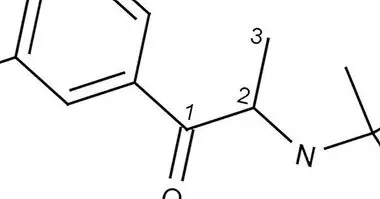Atomoxetine: effects and uses of this psychopharmaceutical
The treatment of different mental disorders can be carried out through different ways. One of them has to do with the modification of brain chemistry through the use of psychotropic drugs, generating through said modification that the symptoms are reduced.
Most psychopharmaceuticals have been synthesized thinking a specific problem, but often their mechanisms of action are effective for more than one problem. Atomoxetine is one of these products , of which you will find a brief description in this article.
- Related article: "Psychotropic drugs: drugs that act on the brain"
What is atomoxetine?
Atomoxetine is a psychopharmaceutical created as an antidepressant which acts as a specific inhibitor of noradrenaline reuptake. It is a substance derived from methylphenoxy-benzenepropanamine that has effects similar to those of noradrenaline and adrenaline.
The effects of this substance are translated into an increase in the ability to control impulsive behavior and greater capacity for concentration. It also seems to generate improvements in working memory capacity and inhibition of response, presenting positive effects in executive functions.
It also has nootropic effect , contributing to maintain concentration and to give a better response at the cognitive level, generates positive effects in the memory and in the elaboration of strategies.
- Maybe you're interested: "Nootropics: what are they and how do they boost your intelligence?"
Mechanism of action
As we have said before, Atomoxetine is an ISRN or specific reuptake inhibitor of norepinephrine or norepinephrine. This implies that it prevents the noradrenaline from being reabsorbed by the presynaptic neuron after being emitted, so that said neurotransmitter remains available in the synaptic space and can be used by the postsynaptic neuron. In short, the main effect of atomoxetine is the increase in noradrenaline levels, as a partial agonist.
The action of atomoxetine occurs at the whole brain level, with effects seen in areas such as the hypothalamus, hippocampus, cerebellum and prefrontal. This blockade of reuptake is very specific to norepinephrine and it does not affect serotonin or dopamine practically, although in the latter case there is an increase in the prefrontal. It also seems to increase acetylcholine levels.
- You may be interested: "Types of antidepressants: characteristics and effects"
Main uses of atomoxetine
Although as an antidepressant It was designed with the purpose of acting on people with depressive disorders , atomoxetine is not usually used in this type of problem due to the higher efficacy of other substances.
Its main use, and for which it has demonstrated the greatest effectiveness, is for the pharmacological treatment of patients with ADHD . Despite this, it is not a drug whose effect is psychostimulant, like most medications that treat this problem. In fact, it is the first non-stimulant psychodrug approved and indicated for the treatment of attention deficit hyperactivity disorder.
This is positive, since patients with this disorder can comorbidly develop tic disorders, which can worsen if stimulant medication is used (which is the main pharmacological treatment applied in subjects with ADHD). Therefore, atomoxetine can be a very effective treatment that, as it is not a stimulant type, does not exacerbate the symptomatology of tic disorders. The beneficial effects are observed in both minors and adults.
It is also indicated in cases of narcolepsy.
- You may be interested: "Attention Deficit Hyperactivity Disorder (ADHD), also in adults"
Side effects
Like all medications, Atomoxetine can generate various undesirable side effects . The severity of these secondary symptoms may vary, but usually it is usually mild symptoms.
Some of the most frequent are anorexia (understood as lack of appetite), some loss of weight linked to the above, Gastrointestinal problems such as nausea and vomiting, irritability and drowsiness . In adults it can also cause sweating and loss of sexual desire, as well as urinary and fecal retention.
At the cardiovascular level it can also generate alterations, increasing blood pressure and heart rate. Therefore it is contraindicated in people with cardiac disorders. It is also not recommended during pregnancy or lactation .
However, the most worrisome side effect that is shared with other antidepressants is the increase in suicidal ideation in minors, as well as aggressiveness, anxiety or behavioral or mood alterations . Extreme caution is necessary especially when starting treatment or changing the dose.
Bibliographic references:
- From Lucas, M.T. and Montañés, F. (2007). Atomoxetine: lights and shadows. Biological Psychiatry, 14; 13-23. Elsevier Madrid.



















